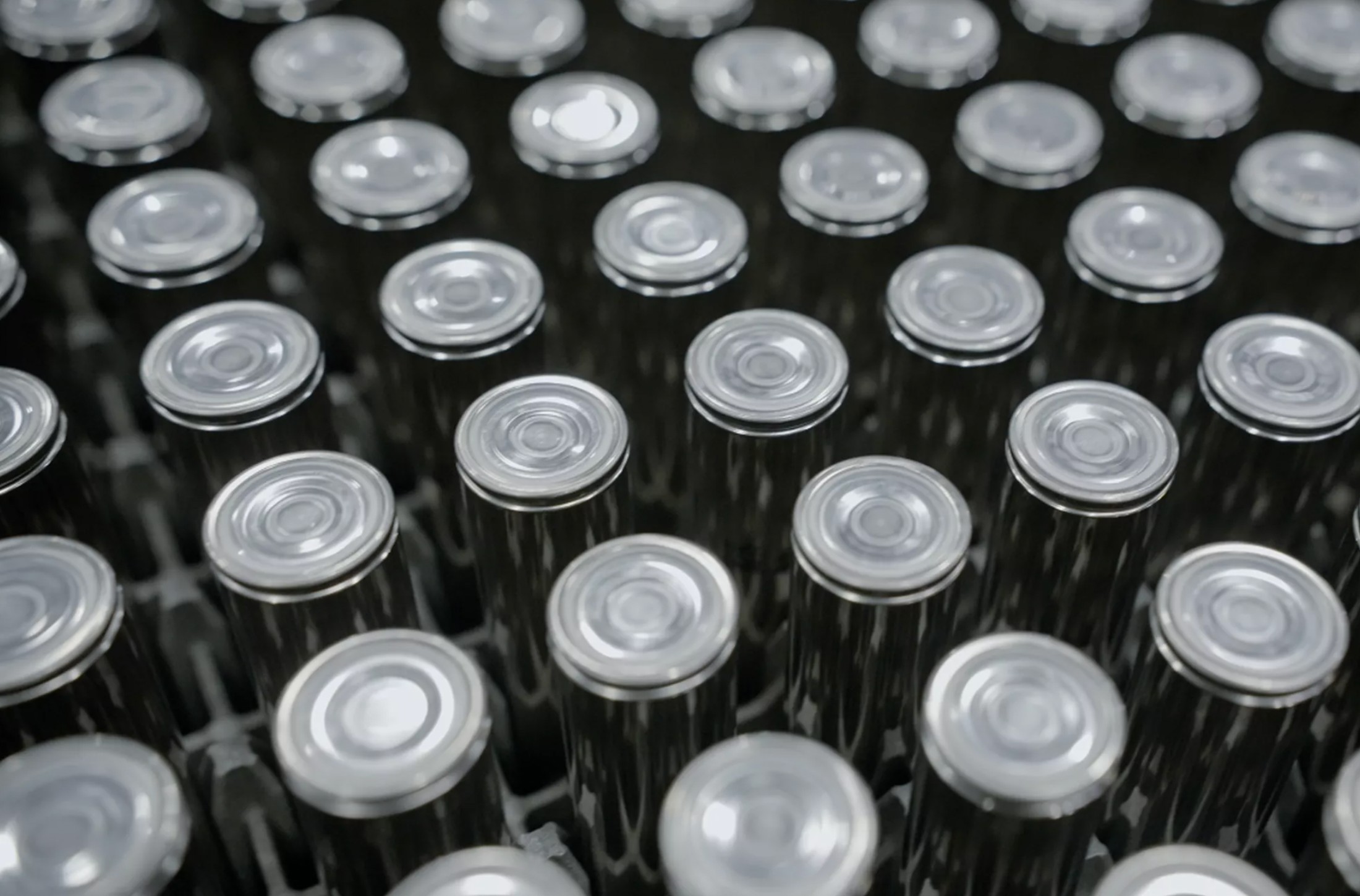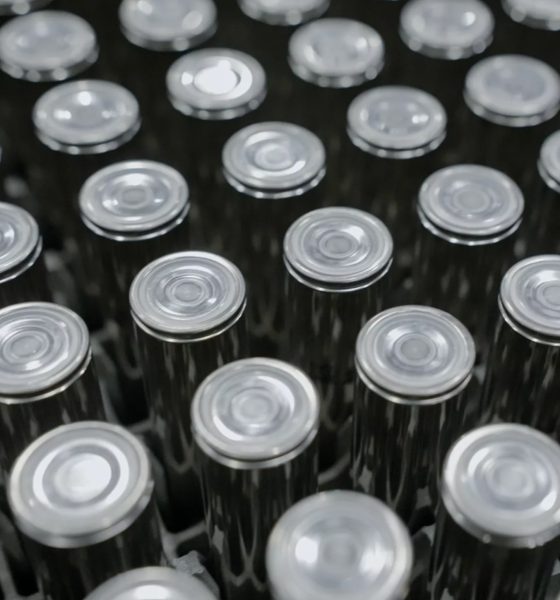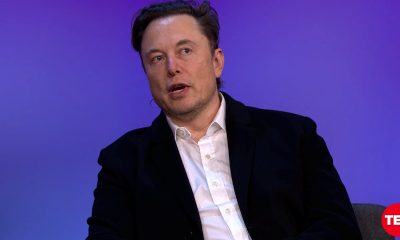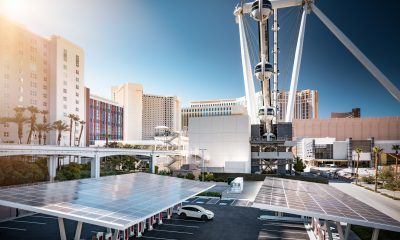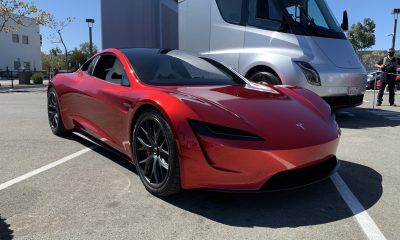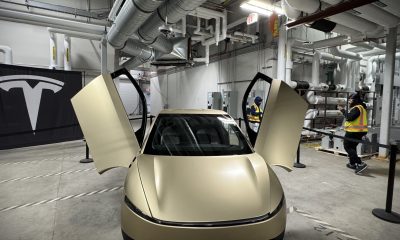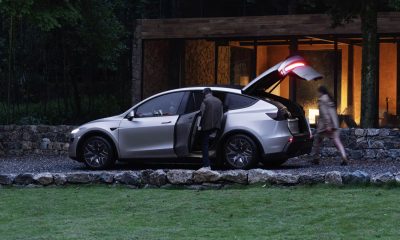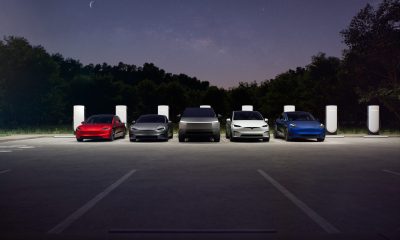Stellantis and BMW are reportedly talking with Tesla battery supplier Panasonic about potential new battery plants in North America. Tesla and Panasonic produce 2170 battery cells at Giga Nevada that power the Model 3 sedan and Model Y crossover.
Panasonic is arguably the industry leader for cylindrical cells, thanks in no small part to its long partnership with Tesla. For over a decade, Panasonic has been supplying 18650 cells for the Model S sedan and Model X SUV and 2170 cells for the Model 3 and Model Y. The Japanese tech company has supplied billions of cylindrical cells to the American EV maker.
Traditional automakers which produce electric cars tend to favor pouch or prismatic batteries, which typically require fewer batteries to power a vehicle. Cylindrical batteries such as those produced by Panasonic tend to be smaller, so thousands of cells are used for every car. But they also have advantages as they have high energy density and are relatively safe.
Panasonic’s efforts seem to have paid off. In a recent report, The Wall Street Journal stated that Stellantis and BMW are both talking to Panasonic for the potential collaboration on one of its EV battery plants in North America. Citing people familiar with the matter, Stellantis is reportedly speaking with the Japanese battery maker for a third factory in North America. Stellantis has already started the construction of two EV battery factories for North America. It has partnered with LG Energy Solution in Canada and Samsung SDI in Indiana.
The WSJ’s sources noted, however, that Stellantis’ discussions for its potential battery plant with Panasonic in North America are still in early stages.
BMW, on the other hand, noted last year that its new generation of electric cars from 2025 would be equipped with cylindrical batteries instead of prismatic cells. The automaker also announced plans to construct six new EV battery plants across Europe, China, and the North American free-trade zone, which includes the United States, Canada, and Mexico.
BMW stated in September that it had awarded contracts in the “two-digit billion-euro range” to CATL and Eve Energy Co. for the buildout of two factories each in China and Europe. The automaker also noted that it would be sourcing batteries in the United States Envision AESC, a subsidiary of China’s leading renewable energy company, Envision Group.
BMW’s head of battery-cell technology Peter Lamp has disclosed that the automaker is currently in discussions with potential suppliers for additional battery projects. Lamp refrained from naming specific companies involved in the negotiations and noted that no contracts had been signed yet.
Considering political tensions with China, however, Chinese battery makers may find it challenging to operate in the United States, the WSJ noted. This, ultimately ws one of the drivers behind BMW’s decision to speak with Panasonic, the publication’s sources stated.
The Teslarati team would appreciate hearing from you. If you have any tips, contact me at maria@teslarati.com or via Twitter @Writer_01001101.
Elon Musk
Elon Musk hits back at former Tesla employee who disagrees with pay package
Tesla is worth more than all other automotive companies combined. Which of those CEOs would you like to run Tesla?
It won’t be me.

Elon Musk gave a tough response to a former Tesla employee who spoke out on X about the structure of the CEO’s pay package, arguing that it is an overpayment and would not generate enough shareholder value.
Without a doubt, the biggest issue on the bill at this year’s Tesla Shareholder Meeting in November is that of the pay package that was proposed to CEO Elon Musk.
As the Shareholder Meeting approaches, Tesla is urging those investors to vote in support of Musk’s pay package. So far, the community has been overwhelmingly supportive of giving Musk his massive payday, which could give him $1 trillion in additional holdings if he completes each of the outlined performance tranches.
However, there are a handful of institutional and individual shareholders who have pushed back against the package, either because of its value or because they feel it does not benefit shareholders enough.
Last week, we reported that Institutional Shareholder Services (ISS) advised voting against Tesla’s pay package for Musk. The firm said the payday would give Musk”extraordinarily high pay opportunities over the next ten years,” and it would “reduce the board’s ability to meaningfully adjust future pay levels.”
Tesla CEO Elon Musk’s $1 trillion pay package hits first adversity from proxy firm
Additionally, it called the value of the pay package “astronomical.”
On Saturday, a former Tesla employee said on X that Tesla’s proposed pay package for Musk would “barely beat inflation and it would underperform the S&P 500 considerably.” Additionally, he said:
“Sorry, Tesla, some of us (and supposedly, ISS too) simply don’t think that underperforming the S&P 500 this much is worth paying somebody 20 billion dollars worth of company value.
As a fan, I love Tesla, I want it to succeed. As a shareholder, I don’t want Tesla to over-pay for its CEO I strongly believe that the 2025 pay package proposal would over-pay for its CEO, and that other competent CEOs could grow Tesla just as much with way less political drama and cost investors much less that this proposal.”
Musk responded bluntly:
“Tesla is worth more than all other automotive companies combined. Which of those CEOs would you like to run Tesla? It won’t be me.”
Tesla is worth more than all other automotive companies combined. Which of those CEOs would you like to run Tesla?
It won’t be me.
— Elon Musk (@elonmusk) October 19, 2025
It seems the worry about Musk’s potential involvement in politics still looms to many, based on the responses to Musk’s post, which frequently mention that as a downside of his last year as Tesla CEO. However, Tesla’s Board confronted that directly.
In its proxy filing after announcing the pay package, Tesla said that it had three commitments, one of which was that the company would “receive assurances that Musk’s involvement with the political sphere would wind down in a timely manner.”
Tesla Board takes firm stance on Elon Musk’s political involvement in pay package proxy
Musk’s previous pay package was approved by shareholders twice, but it never made it to the CEO because of a lawsuit with the Delaware Chancery Court brought forth by a small-time shareholder.
The response from Musk does seem to show that if this time is no different, he will inevitably step down as CEO in the coming years.
News
Tesla rivals are lagging behind alarmingly in this crucial EV necessity
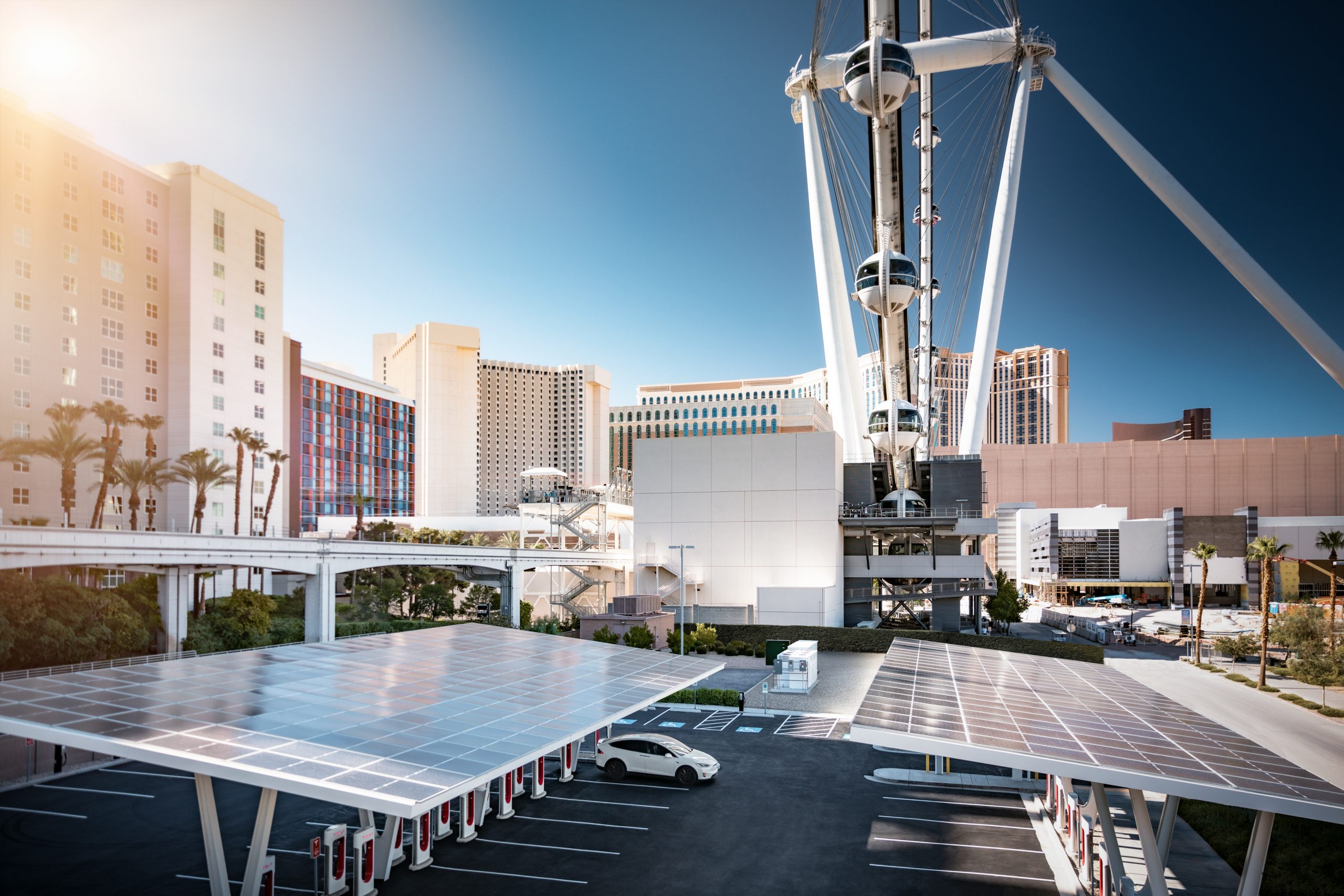
Tesla rivals are lagging behind the company in alarming fashion in this crucial EV necessity: charging.
Tesla has had a long-standing reputation for having the most expansive electric vehicle charging infrastructure, and even as other companies have launched their own as part of the vehicle manufacturing, nobody seems to keep pace with the EV leader.
A report from Paren exhibited this trend in Q3, showing that Tesla overwhelmingly dominated EV charging stall installations over the past three months. This data is based on U.S. installations, where Tesla has long held a dominating position as the leader in overall electric vehicle sales for many years.
In Q3, Tesla installed 1,820 new chargers in the United States, bringing its total presence to 34,328, an all-time market share of 53.2 percent of all charging stalls in the country.
What’s alarming is the fact that all other networks — ChargePoint, Red E, Electrify America, EV Connect, EVgo, Ionna, Blink, Pilot Flying J, and Rivian Adventure — only installed 841 chargers collectively in Q3. That is nearly 1,000 units behind Tesla, despite there being nine companies contributing as competitors.
These nine networks have 10,055 stalls in total, the data from Paren shows, accounting for 15.6 percent of the chargers in the United States.
Tesla added more Superchargers in the US in Q3 than the next nine networks combined. pic.twitter.com/zihhezI6a6
— Sawyer Merritt (@SawyerMerritt) October 20, 2025
EV charging is such a crucial part of the ownership experience, and also a part of the ongoing expansion of EV adoption in the United States.
As more people buy EVs and they become a more prominent form of passenger transportation, more chargers are needed. Many owners charge at home, but charging options in public are important to have for traveling, commuting, and for those who do not have access to residential charging.
With Tesla opening its Supercharger Network to the majority of EV brands over the past two years, things have gotten better.
It has been alarming to see so many companies involved in EV infrastructure essentially accept the gap between Tesla and themselves; not a single company has tried to up its pace to catch up to what Tesla has.
When it comes down to it, as long as there is charging, the manufacturer does not truly matter.
However, it would be nice to see Tesla have some competition in the space, but with its domination and head start in the infrastructure division, it seems the company will have this competitive advantage for years to come.
News
Tesla updates fans on its plans for the Roadster
Earlier in 2025, Musk said Tesla would host the “most epic demo” for the Roadster in late 2025. We’re in Q4, so time is running out, but we finally got the update we’ve been waiting for from von Holzhausen on the Ride the Lightning podcast yesterday.
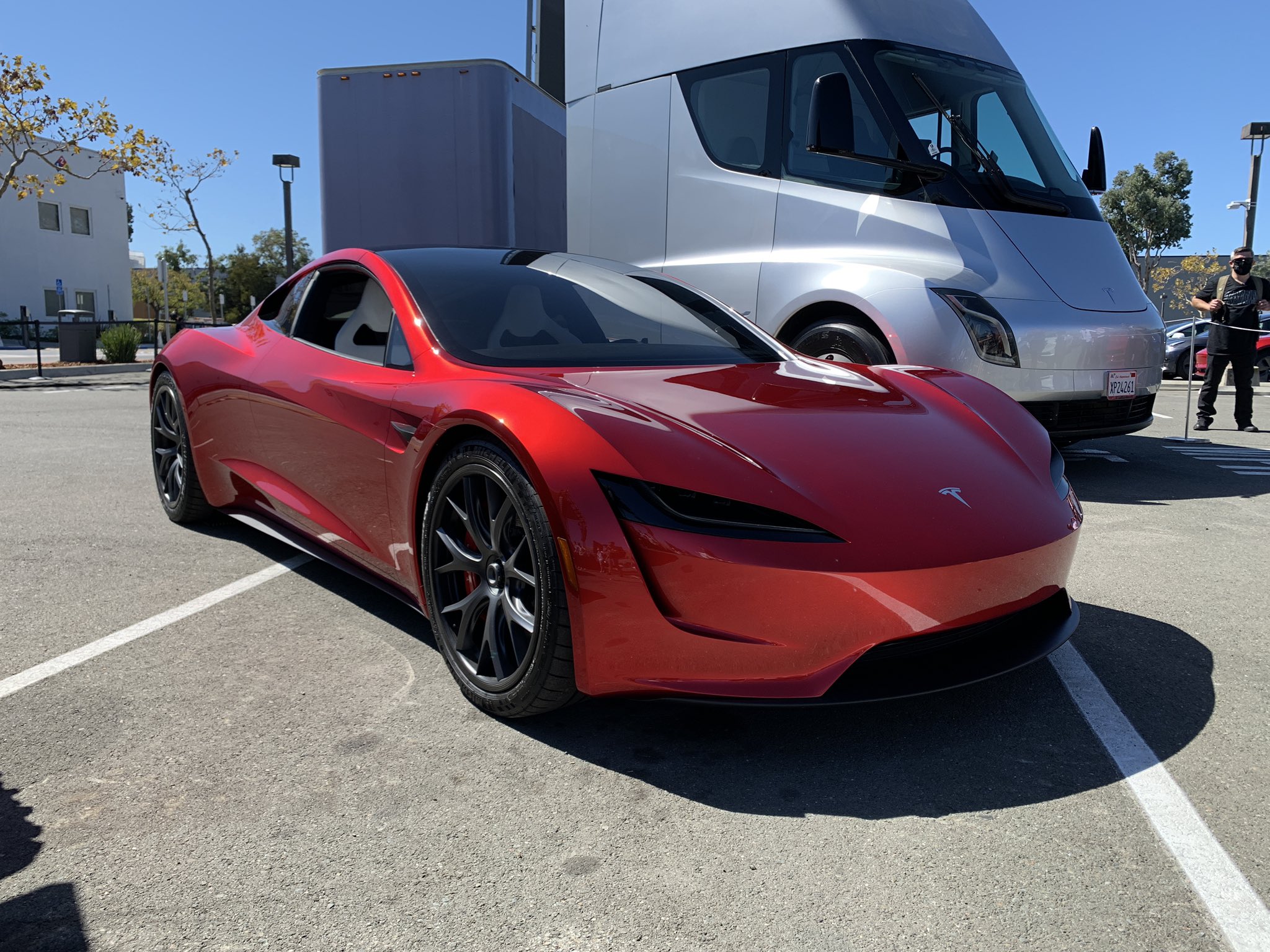
Tesla has finally updated fans on its plans for the Roadster after stating earlier this year it would host the “most epic demo,” showcasing the vehicle’s capabilities.
The Roadster is amongst the most highly anticipated automotive releases in the entire industry, and was set for release in 2020 initially. However, Tesla got so caught up with scaling up the Model Y and focusing on autonomy that the project took a figurative backseat.
In the years since its planned release, we have not seen much of the vehicle. Company executives like Elon Musk and Chief Designer Franz von Holzhausen have hinted at things about it and teased us with potential release dates, but each time, it has been delayed.
Last year, Tesla planned to show something, but Musk saw what improvements had been made from the original design unveiled back in 2017 and figured the company could go a step further, only delaying the project another year.
But what’s another year, right?
Earlier in 2025, Musk said Tesla would host the “most epic demo” for the Roadster in late 2025. We’re in Q4, so time is running out, but we finally got the update we’ve been waiting for from von Holzhausen on the Ride the Lightning podcast yesterday.
Confirming the demo was still on for this year, he also teased some new features that the Roadster will have, like new paint options.
Von Holzhausen said:
“I’m excited to showcase the Roadster for a lot of different reasons. The wait will be worth it.”
Additionally, he said the capabilities of the Roadster are truly something, and they have gotten the vehicle to a point that it seems to test the “limits of physics.” Franz added that Tesla has “really gotten to a point where we are going to be achieving that standard that we set out.”
Obviously, the Roadster is not a major contributor to Tesla’s mission or to its future, which mostly leans on artificial intelligence and Robotaxi or autonomy. However, it is still a product that Tesla needs to offer, as many have put massive $250,000 downpayments on the vehicle in an attempt to purchase one.
Tesla has not yet announced a date for its demo of the Roadster, but based on Franz’s interview, it seems the company is still on track to hold that by the end of the year.
The full episode with Franz von Holzhausen on the Ride the Lightning podcast is available here.
-
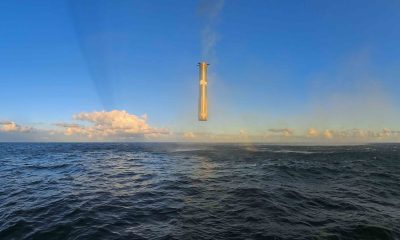
 Elon Musk3 days ago
Elon Musk3 days agoSpaceX posts Starship booster feat that’s so nutty, it doesn’t even look real
-

 Elon Musk2 days ago
Elon Musk2 days agoTesla Full Self-Driving gets an offer to be insured for ‘almost free’
-
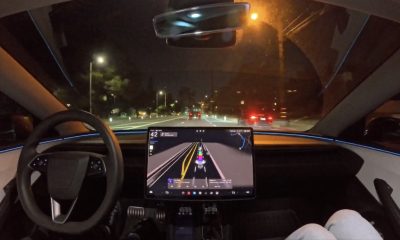
 News2 days ago
News2 days agoElon Musk confirms Tesla FSD V14.2 will see widespread rollout
-
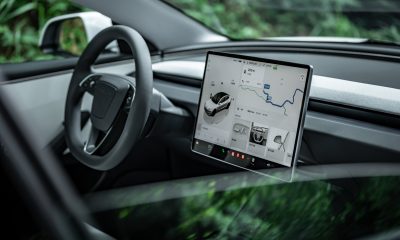
 News3 days ago
News3 days agoTesla is adding an interesting feature to its centerscreen in a coming update
-
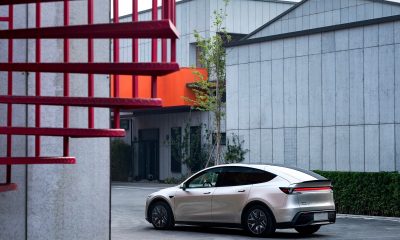
 News5 days ago
News5 days agoTesla launches new interior option for Model Y
-
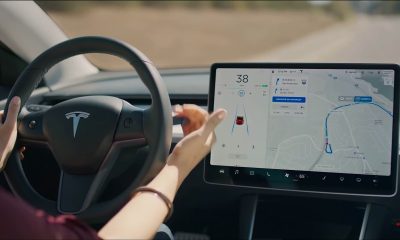
 News4 days ago
News4 days agoTesla widens rollout of new Full Self-Driving suite to more owners
-
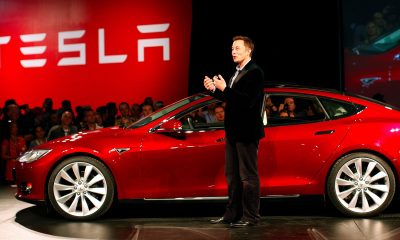
 Elon Musk3 days ago
Elon Musk3 days agoTesla CEO Elon Musk’s $1 trillion pay package hits first adversity from proxy firm
-
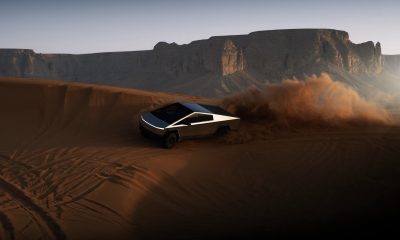
 News5 days ago
News5 days agoTesla makes big move with its Insurance program

